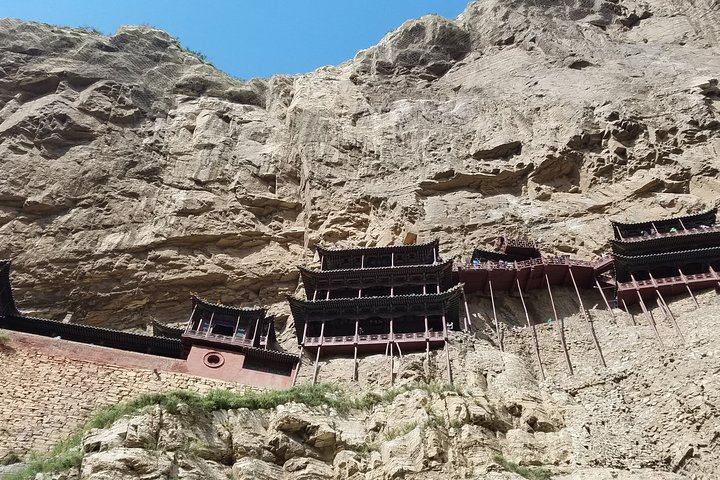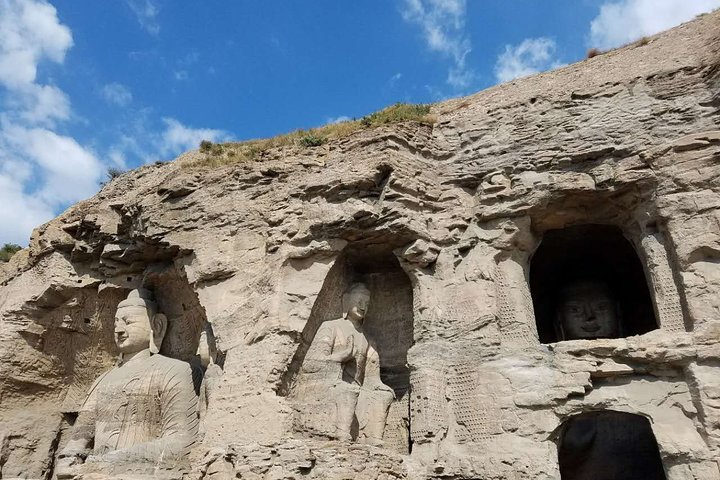Exploring Datong’s Timeless Wonders: Yungang Grottoes and Hanging Temple
Drawn by the allure of ancient Buddhist art and architectural marvels, I embarked on a journey to Datong to explore the Yungang Grottoes and the Hanging Temple. What I discovered was a profound cultural odyssey that transcended time and space.
A Journey Through Time: The Yungang Grottoes
As I stepped into the Yungang Grottoes, I felt as though I had been transported back in time to an era where art and spirituality intertwined seamlessly. The sheer scale of the site is overwhelming, with 45 caves stretching over a kilometer, each one a testament to the devotion and craftsmanship of ancient artisans. The intricate carvings and statues, numbering over 51,000, are a visual feast that speaks to the rich tapestry of Buddhist art in China.
Walking through the grottoes, I was struck by the serene expressions of the Buddha statues, each one unique yet part of a greater whole. The play of light and shadow across the stone surfaces added a mystical quality to the experience, as if the ancient spirits were whispering their stories to those who would listen. It was a humbling reminder of the enduring power of art to transcend time and culture.
The Yungang Grottoes are not just a historical site; they are a living testament to the cultural exchange that has shaped East Asia. As I explored the caves, I couldn’t help but reflect on the interconnectedness of our world, a theme that resonates deeply with my own multicultural background. This visit was more than just a sightseeing tour; it was a journey into the heart of a shared human heritage.
The Gravity-Defying Hanging Temple
The Hanging Temple, perched precariously on the cliffs of Hengshan Mountain, is a marvel of architectural ingenuity. As I approached the temple, I was filled with a sense of awe at the sight of this wooden structure clinging to the rock face, seemingly defying gravity. The temple’s unique location, suspended 50 meters above the ground, offers breathtaking views of the surrounding landscape.
Climbing into the temple, I was greeted by a series of interconnected halls and walkways, each one offering a new perspective on the stunning scenery below. The temple’s design is a masterclass in balance and harmony, with its evenly distributed weight and well-balanced structure. It is a testament to the skill and vision of the builders who dared to dream of such an ambitious project.
Inside the temple, I found a collection of sculptures and artifacts that reflect the diverse religious influences that have shaped this region. The Hanging Temple is not just a Buddhist site; it is a place where Taoism, Confucianism, and Buddhism coexist, a symbol of the harmonious blending of different beliefs. This aspect of the temple resonated with me, reminding me of the importance of embracing diversity and finding common ground.
Reflections on a Cultural Odyssey
My visit to the Yungang Grottoes and the Hanging Temple was a profound cultural odyssey that left me with a deeper appreciation for the rich history and traditions of China. These sites are more than just tourist attractions; they are windows into a world where art, spirituality, and architecture converge to create something truly extraordinary.
As I journeyed through these ancient monuments, I was reminded of the importance of preserving our cultural heritage for future generations. The stories etched into the stone and wood of these sites are a testament to the creativity and resilience of the human spirit. They are a reminder that, despite the passage of time, the essence of our shared humanity endures.
For those seeking a deeper understanding of China’s cultural legacy, the Yungang Grottoes and the Hanging Temple offer an unparalleled experience. They are places where history comes alive, inviting visitors to step into a world of wonder and discovery. I left Datong with a renewed sense of connection to the past and a greater appreciation for the cultural tapestry that binds us all together.












































